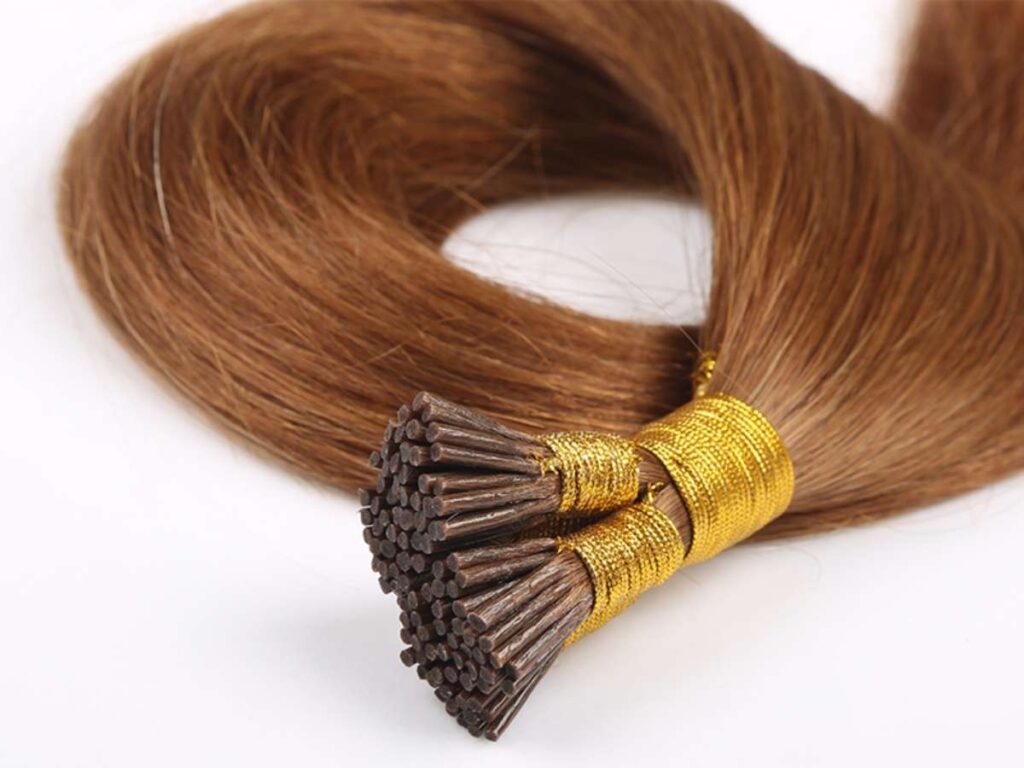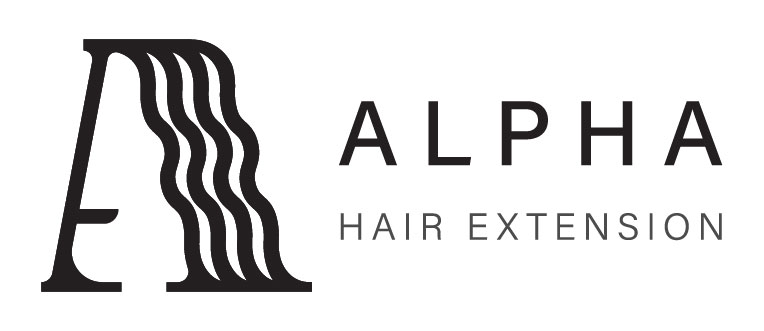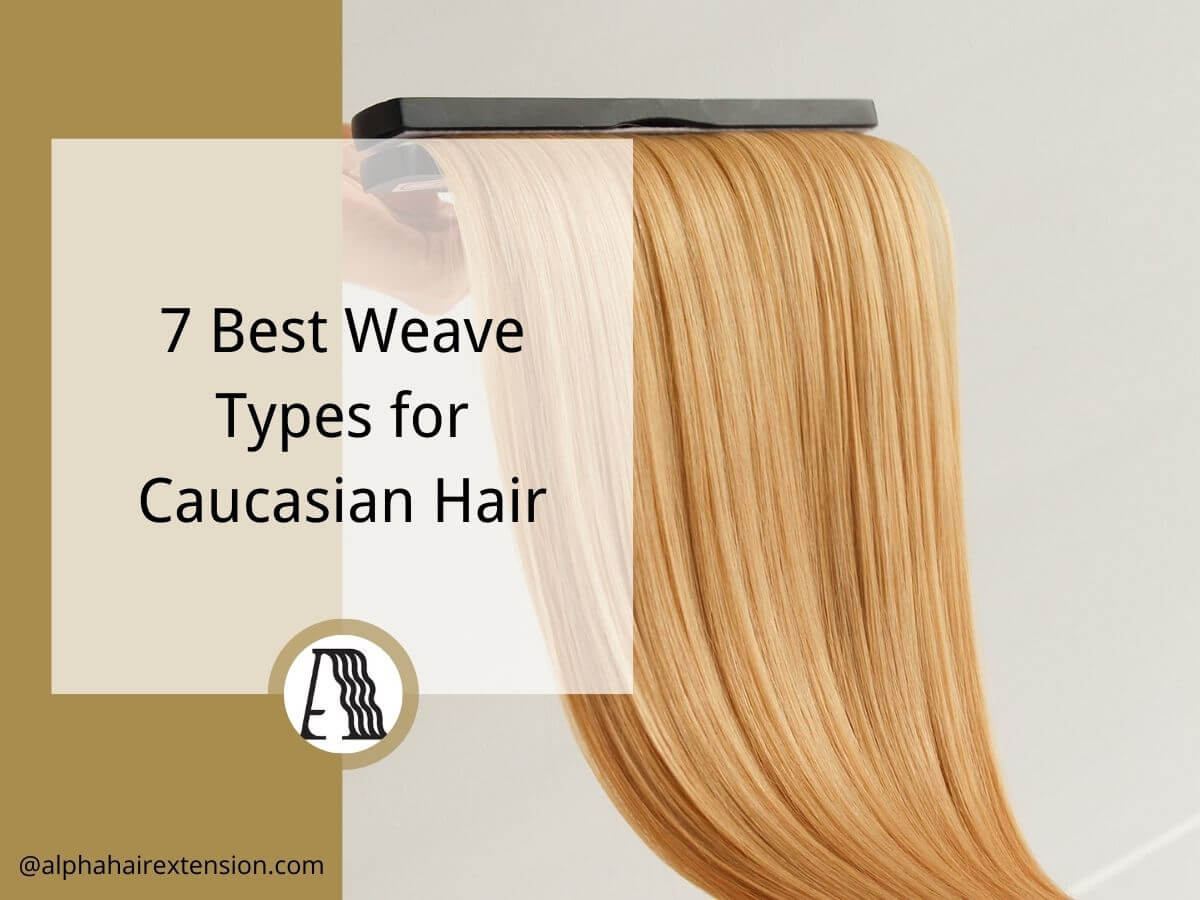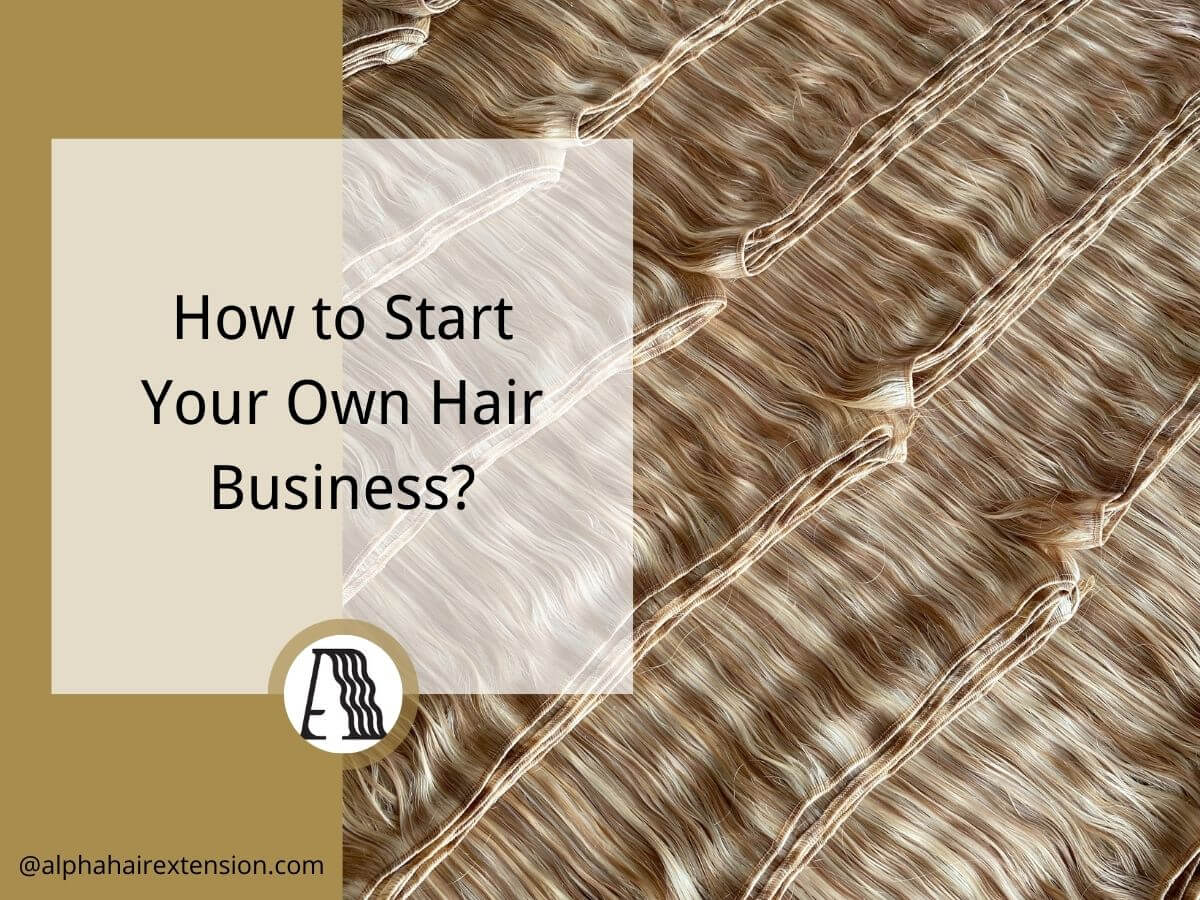I made my first mistake with I-Tip extensions by thinking they were as easy as clip-ins. I learned the hard way that poor placement leads to discomfort, damage, and unhappy clients.
If you run a salon, you know there’s no room for error. Clients expect perfection, and it’s up to us to deliver seamless, natural results.
That’s why this guide exists. It’s built on real industry experience—practical, tested, and refined over years of installations. No fluff, just what works.
Follow this step-by-step breakdown, and you’ll confidently install I-Tips without fear of slippage, tension, or early wear. You’ll get expert tips that keep clients coming back.
So, let’s get started!
Step#1 Gather the Right Tools & Materials
Before you start, make sure you have the right tools. The wrong tools can cause slipping, discomfort, or even hair damage. Having everything ready will make the installation smooth and stress-free. Here are the tools and materials you need:
- I-Tip Hair Extensions: Choose high-quality I-Tip extensions that match the natural hair in color and texture. Cheap extensions may shed, tangle, or feel unnatural. If unsure, always test a few strands before installation.
- Beads (Micro or Nano Rings): The bead size should match the hair thickness. Microbeads work well for medium to thick hair, while nano beads are best for fine hair. If the bead is too big, the extension may slip. If it’s too small, it can pull on the hair.
- Looping Tool: This tool helps thread natural hair through the bead. A high-quality loop tool will save time and reduce breakage.
- Pliers: You need pliers to clamp the beads and secure the extensions. Use smooth-tipped pliers to avoid damaging the beads or hair. I once tried using regular pliers in a pinch, and it flattened the bead unevenly, making removal a nightmare. Always use the right tool!
- Sectioning Clips & Comb: Clips keep the hair neat and prevent strands from getting tangled. A fine-tooth comb helps create clean, even sections.

Step#2 Preparing the Client’s Hair
Prepping the hair properly helps I-Tip extensions stay secure and last longer. Skipping this step can lead to slipping, discomfort, or even damage. Clean, tangle-free hair makes installation easier and prevents unnecessary stress on natural strands. Here’s how to prepare the hair:
- Wash with a Clarifying Shampoo: Start by washing the hair with a clarifying shampoo. This removes oils, dirt, and product buildup that could make the beads slip. Avoid conditioner, especially at the roots, because it can make the hair too smooth for the beads to grip.
- Dry the Hair Completely: Always install I-Tip extensions on dry hair. Wet hair is weaker and stretches more, which can lead to breakage. Blow-dry the hair thoroughly or let it air-dry before starting the installation.
- Detangle Gently: Use a wide-tooth comb or detangling brush to remove knots. This step prevents snagging when threading the hair through the beads. If the hair is prone to tangling, apply a small amount of lightweight leave-in conditioner to the mid-lengths and ends (never near the roots).
- Section the Hair Properly: Divide the hair into clean, even sections using clips. Work in horizontal rows, starting from the nape and moving upward. Neat sections make the installation look more natural and prevent uneven weight distribution.

Step#3 Installing I-Tip Hair Extensions
Now that the hair is prepped, it’s time for installation. Proper placement and technique are key to making I-Tip extensions last. Rushing this step can cause discomfort, slipping, or an unnatural look. Here’s how to install I-Tip extensions correctly:
Placement Strategy
- Start at the back of the head and work your way up in neat, horizontal rows.
- Keep each extension about ¼ inch away from the scalp. This prevents tension and allows natural movement.
- Leave space around the hairline and crown. This ensures a natural blend and hides the beads when styling.
I once made the mistake of placing extensions too high on the crown, and they became visible when my client pulled her hair back. Since then, I always double-check placement for a seamless look.
Installation Process
- Take a Small Section of Natural Hair: Using a tail comb, separate a thin section of hair. It should match the thickness of the I-Tip extension strand. If the section is too thick or too thin, the bead may not hold properly.
- Thread the Hair Through a Microbead: Slide a microbead onto a looping tool. Hook the natural hair into the loop and pull it through, placing the bead near the scalp but not too tight.
- Insert the I-Tip Extension into the Bead: Take the I-Tip extension and slide it into the bead. Ensure the extension sits securely inside without bending or folding.
- Slide the Bead Close to the Scalp: Move the bead upward until it’s about ¼ inch from the scalp. The extension should have slight movement to allow natural hair growth and prevent tension.
- Secure the Bead: Use pliers to firmly flatten the bead, securing the extension in place. Press evenly to avoid damaging the bead or causing discomfort. A properly clamped bead should hold the extension without slipping.
- Repeat Across the Entire Section: Continue installing extensions row by row. Ensure even spacing to avoid bulkiness or gaps. Check placement as you go to maintain a natural, balanced look.
Common Mistakes to Avoid
Placing extensions too close to the scalp can cause discomfort and tension, making the hair feel tight or sore. Using too much or too little hair per bead affects grip—too much makes it bulky, too little causes slipping. Not clamping the bead properly weakens the hold, leading to premature extension loss.
Step#4 Blending & Styling
You’ve placed every I-Tip extension with precision. The beads are secure. The sections are even. But your job isn’t done yet.
This step is what transforms your installation from “good” to “absolutely flawless.” If the extensions don’t blend seamlessly with your client’s natural hair, the entire install loses its magic.
Let’s make sure that doesn’t happen.
Trim and Layer
A raw I-Tip installation isn’t finished until it’s customized. Straight out of the package, extensions can look too blunt or heavy at the ends. That’s why layering is non-negotiable.
Here’s how I do it every time:
- Start with Dry Hair: Wet hair stretches, so always trim and layer once the hair is completely dry.
- Use a Point-Cutting Technique: Instead of blunt, straight cuts, soften the ends by snipping into them at an angle. This helps the extensions blend naturally.
- Frame the Face: Take a look at where the client’s shortest natural layers fall and adjust the extensions accordingly. If there’s a harsh length difference, soften it with a few well-placed snips.
Even if the client wants to keep all the length, a light dusting of the ends will make the hair flow naturally. That’s the difference between an install that looks like extensions and one that looks like their own hair.
Heat Styling
Now that the hair is properly layered, it’s time to style. A little heat can work wonders in blending natural hair with extensions. But here’s the key: always protect the hair first.
- Apply Heat Protectant: Extensions don’t get natural oils from the scalp like real hair does, so they’re more prone to dryness and heat damage.
- Choose the Right Tools: A flat iron creates a sleek, polished look, while a curling iron or wand adds soft waves for a more natural blend.
- Go Section by Section: Style both the natural hair and extensions together to create a seamless finish.
Step#5 Final Touches
Take a step back. Look at your work. This is the moment that separates average installs from flawless, professional results. Everything up until now—sectioning, bead placement, securing the I-Tips—has been about precision.
But this last step? It’s about artistry. It’s about ensuring your client leaves your chair feeling like they just got the best extension install of their life.
Blend Like a Pro
Let’s be real—no matter how perfect your placement is, if the extensions don’t blend, they won’t look natural.
Run your hands through the hair. Does it move effortlessly? Does it fall naturally? Or do the extensions look obvious? If something feels off, it’s time to fix it.
Here’s what I do every single time:
- Check for Bulkiness: If certain sections feel too thick, soften them by carefully layering the ends with texturizing shears.
- Look for Harsh Lines: If there’s a clear difference between the natural hair and the extensions, blend them using a point-cutting technique.
- Brush and Shake It Out: This reveals any uneven weight distribution and ensures a seamless finish.
The Last Check (Don’t Skip This!)
This is your final quality control. It’s the moment to ensure everything is flawless before your client leaves the chair. Rushing through this step? That’s how you end up with callbacks, complaints, or—worse—lost business.
This is where I ask myself the real questions:
- Are All the Beads Secure?
- Is There Any Pulling or Discomfort?
- Do the Extensions Blend Seamlessly?
- Does Hair Feel Lightweight and Natural?
I run through this checklist with every single install because one small mistake can cost you a client—but one perfect install can earn you a loyal customer for life.
Final Thoughts
And just like that, I-Tip extensions went from being my biggest challenge to one of my biggest wins. After perfecting my technique, I never had another client complain about slipping or discomfort.
Now, you have the exact step-by-step process to get it right the first time. You know what tools to use, where to place the beads, and how to ensure a flawless, long-lasting result.
So, what’s stopping you from mastering I-Tip installations?
If you need expert guidance or training, we’re here to help.
Contact us today and take your extension game to the next level!
Explore Related Resources
Want to see more? We’ve gathered additional product choices to give you even more variety:
Still haven’t found what you’re looking for? Don’t hesitate to contact us. We’re available around the clock to assist you.







